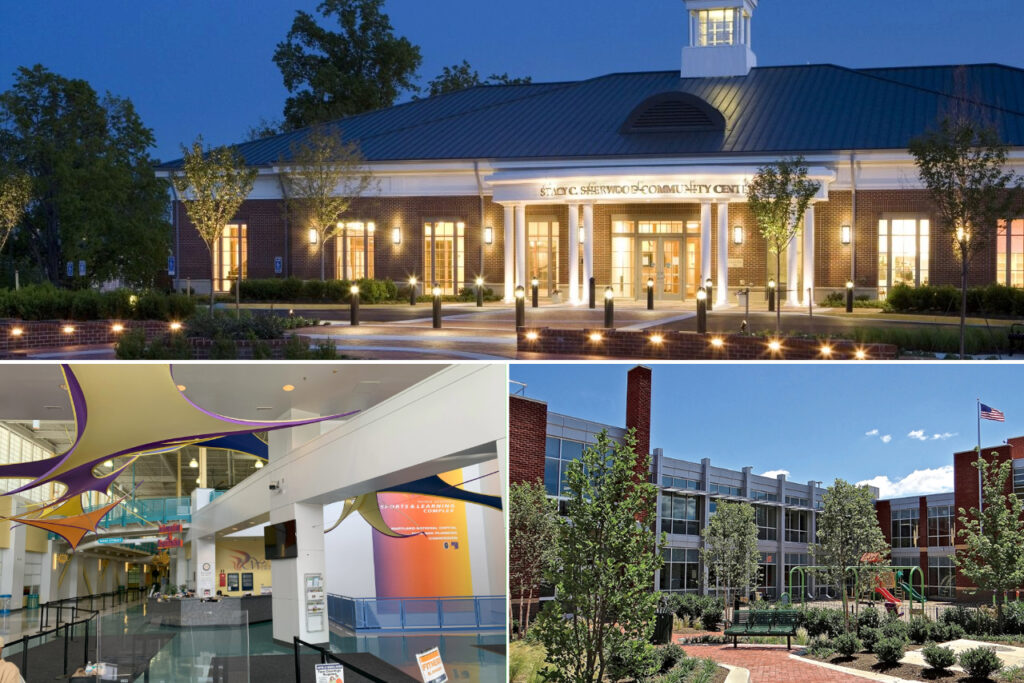
In an era where local municipalities compete for top talent, cities, counties, and school districts must find compelling ways to attract and retain dedicated employees. Public sector workers bring a profound commitment to their communities, often serving where they live, raise families, and invest in the future. Their work directly shapes the well-being of their neighbors and the places they call home. To cultivate an environment that supports their dedication and enhances productivity, municipal governments must make intentional investments in the spaces where their employees work and thrive. The following strategies outline how forward-thinking infrastructure improvements can make public employment more attractive and sustainable.
1. Modernizing workspaces to foster engagement
Government buildings should be more than functional—they should be welcoming, inspiring, and designed with productivity in mind. Investing in updated workspaces that are well-lit, energy-efficient, and outfitted with comfortable furnishings sends a message that employees are valued. Offices with ample collaborative spaces, modern ventilation systems, and ergonomic workstations contribute to well-being and effectiveness. These improvements not only enhance employee morale but also improve interactions with the public they serve.
2. Tackling housing affordability for public employees
One of the greatest challenges in municipal workforce retention is the rising cost of housing. Without viable housing options, educators, emergency responders, and municipal workers are often forced to live far from their jobs, making long commutes a daily struggle. Cities that establish workforce housing initiatives—whether through downpayment assistance programs or partnerships to develop affordable housing—demonstrate a commitment to their employees’ stability. By ensuring public workers can afford to live in the communities they serve, municipalities build stronger, more connected workforces.
3. Prioritizing continuous learning and skill development
Municipal employees thrive in environments where learning is encouraged. Establishing professional development hubs equipped with the latest training tools allow employees to grow within their roles rather than seek advancement elsewhere. Investing in dedicated learning spaces and technology-driven training opportunities fosters a skilled workforce prepared for evolving public service challenges. Beyond just training, creating collaborative hubs for networking and mentorship further strengthens team cohesion.
4. Strengthening employee health and well-being
Public sector work can be stressful, and municipalities must acknowledge the impact of workplace conditions on employee health. Cities that offer on-site wellness facilities, discounted fitness center memberships, and dedicated mental health resources create a culture that prioritizes well-being. Simple additions such as relaxation spaces, yoga sessions, or health coaching can significantly boost employee engagement and reduce burnout. Prioritizing wellness initiatives shows that municipal leadership values not just the work employees do but also their overall health.
5. Addressing childcare needs for working families
A major obstacle for many working parents is securing quality childcare. When municipalities invest in on-site or subsidized childcare facilities, they not only ease financial and logistical burdens but also make public employment a more viable career choice for parents. Governments that provide family-friendly policies and flexible childcare solutions position themselves as employers that understand and support the realities of modern working families.
6. Modernizing technology to meet workforce expectations
The future of government work depends on reliable, efficient technology. Upgrading digital systems, integrating cybersecurity measures, and ensuring seamless IT support creates an environment where employees can perform their jobs effectively. Public employees expect the same technological capabilities as their private-sector counterparts, and cities that modernize their IT infrastructure are better equipped to retain skilled workers. By investing in smart technology solutions, municipalities can streamline operations and enhance employee satisfaction.
A CALL TO ACTION: Building a workplace for the future
Attracting and retaining a high-performing municipal workforce requires more than competitive salaries—it demands an investment in the places where people work and the resources that support them. Local governments that prioritize modern facilities, housing support, wellness initiatives, and technological advancements will not only enhance job satisfaction but also strengthen their communities. These improvements are not just operational necessities; they are commitments to the people who dedicate their careers to public service.
At B&D, we specialize in advising municipalities in bringing these ideas to life, whether it’s reimagined workspaces, housing solutions or next-generation facilities. Our expertise ensures that investments in social infrastructure are optimized and value is created for lasting improvements.
Jeff Bonvechio, Regional Vice President at Brailsford & Dunlavey since 2018, brings 20 years of experience in planning, designing, and constructing public education, recreation, and library facilities. As Director of Capital Projects for major DC Government agencies, he managed budgets up to $500 million and oversaw the development or renovation of 17 LEED Gold-certified neighborhood libraries. Jeff holds a B.S. in Civil Engineering from Ohio University and is affiliated with the Urban Land Institute’s Leadership Institute, the Construction Owners Association of America, the American Society of Professional Engineers, and the American Society of Civil Engineers. Jeff can be reached at JBonvechio@bdconnect.com.